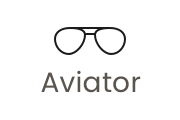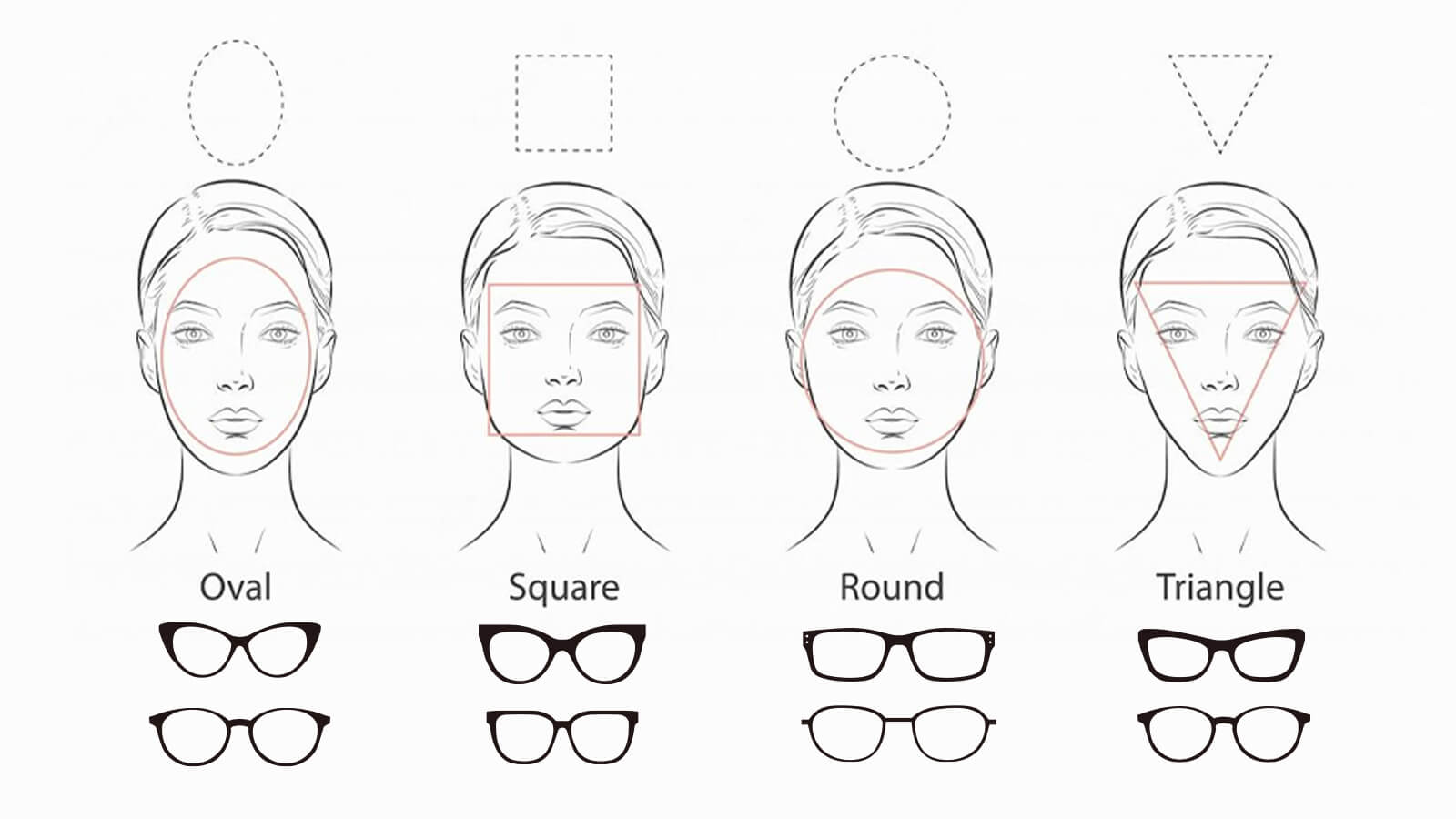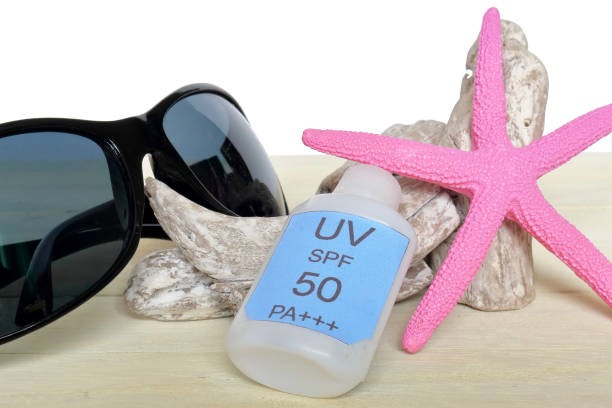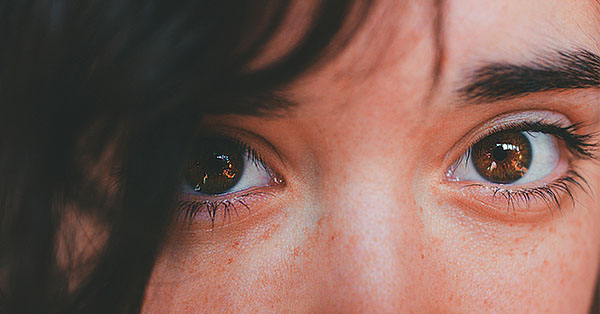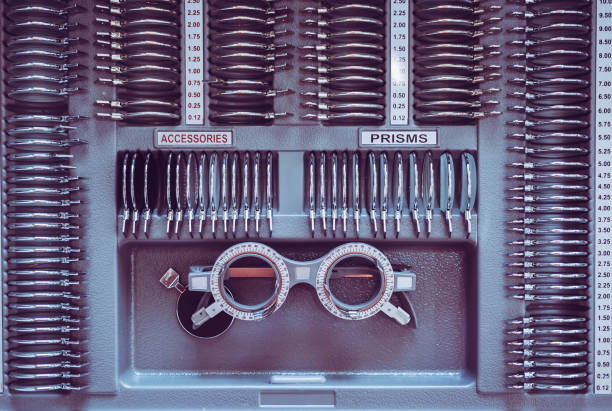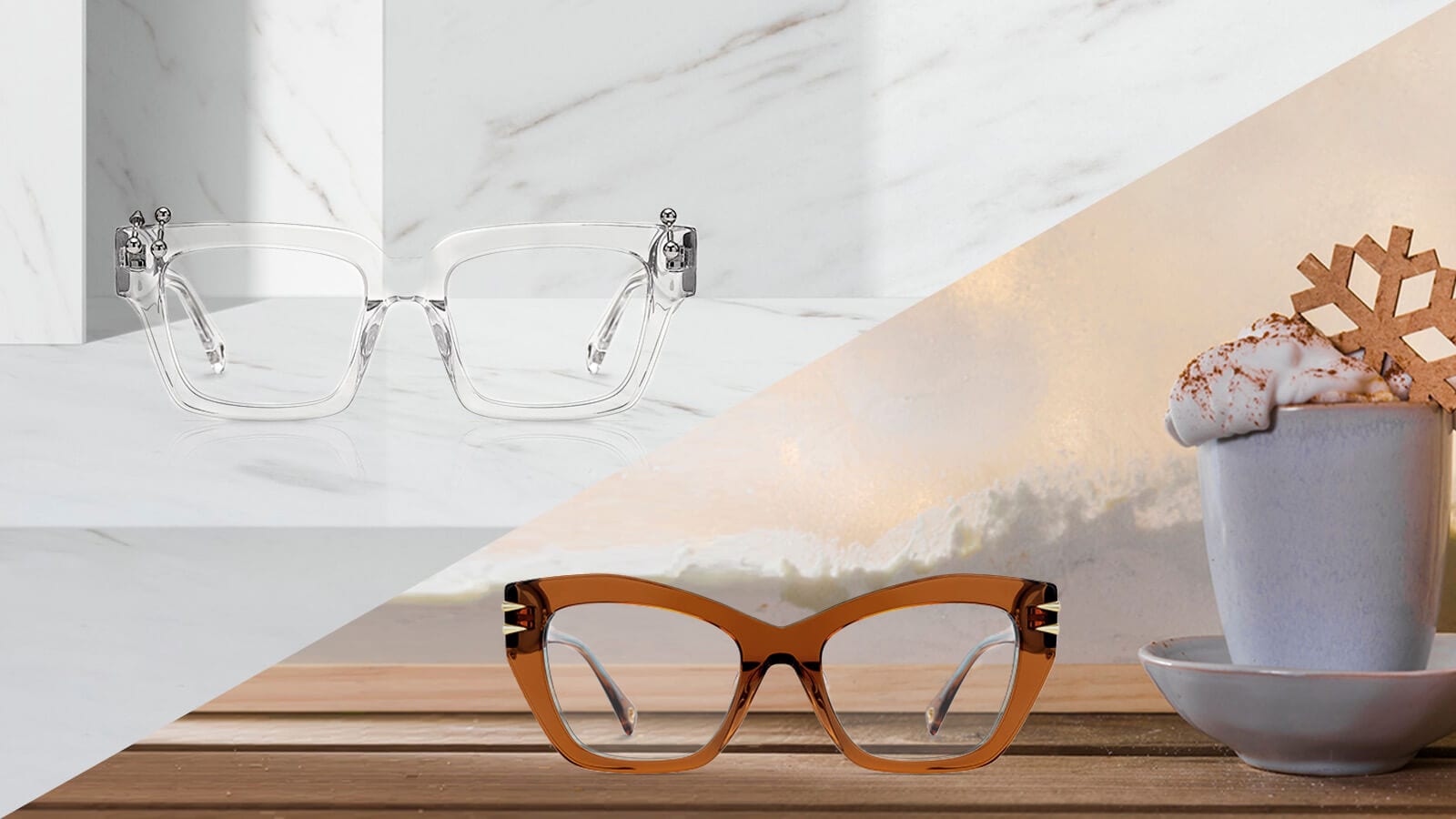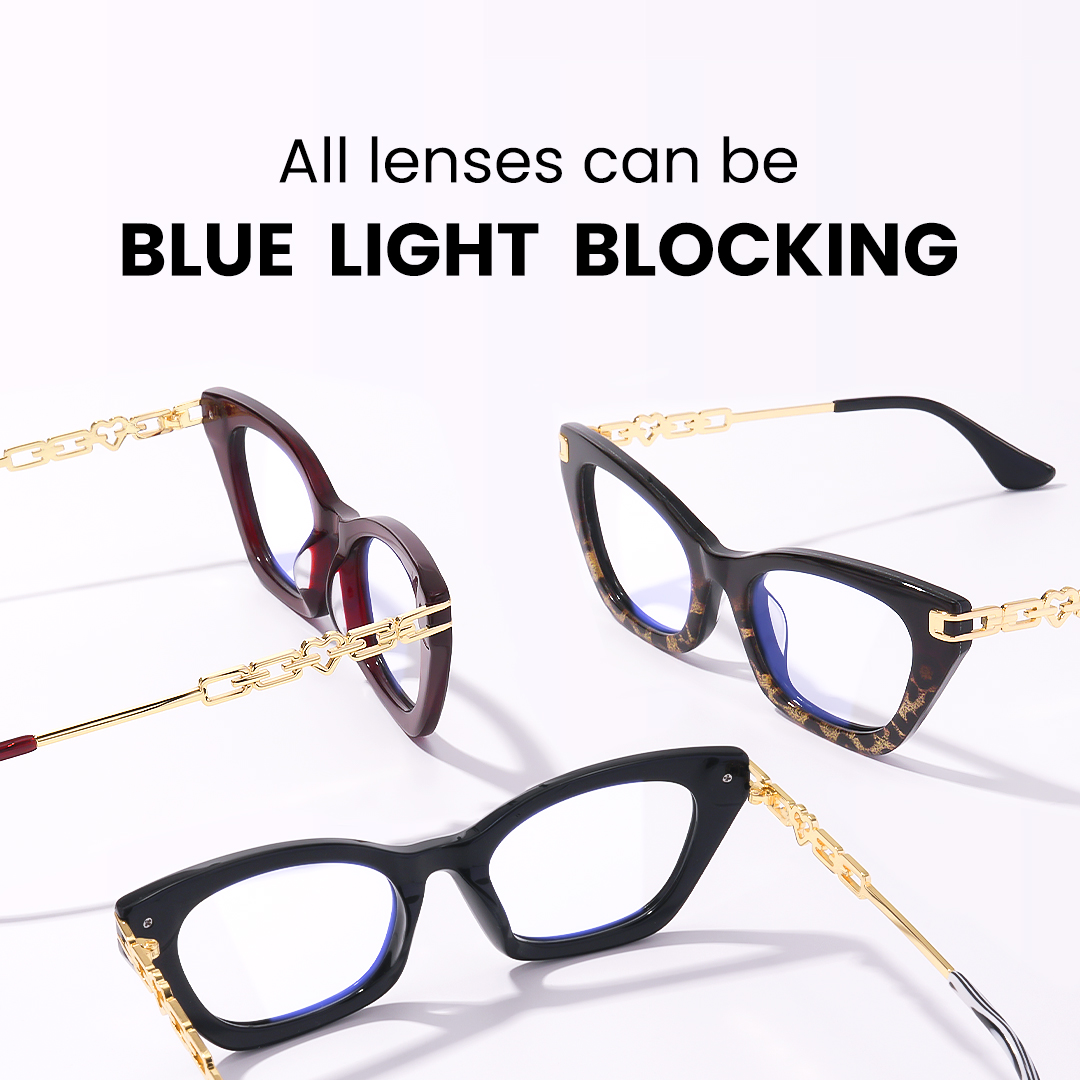
Guide to Picking Glasses That Suit Your Face Shape Perfectly
February 27,2023

What is Boho Style? A Comprehensive Guide to Boho-Chic Fashion
February 13,2025

Virtual Glasses Try On - Find Your Perfect Pair Online
April 02,2024

UV Protection Glasses VS. Blue Light Glasses - Vooglam
July 20,2023

Newest Style Modern Trendy Mens Glasses | Vooglam
March 01,2024

Stylish Reading Glasses: Blending Fashion with Functionality
February 16,2023

What are photochromic lenses & glasses?
September 22,2023

Brown Eyes: The Beauty of the Most Common Hue
September 01,2024

The chubby face glasses for round face female
August 02,2023

What are prisms in eyeglasses?
March 20,2023

What Are Bifocal Glasses? The Complete Guide (Types, History & Benefits)
April 14,2023

How to Read Your Eyeglass Prescription?
March 11,2023
How Long Does It Take to Adjust to New Glasses?
Got new glasses but your vision feels off, or your head hurts? Before you panic or rush back to the optometrist, take a deep breath — you're experiencing something completely normal. The question "How long does it take to adjust to new glasses?" is one of the most common concerns for new wearers and prescription updates alike. Whether you're dealing with slight discomfort or feeling like you're walking in a funhouse, this article explains exactly how long adjustment takes, why your brain needs this adaptation period, and practical tips to make the transition smoother. Let's clear up the blur around new glasses adjustment.

Is It Normal to Struggle With New Glasses?
Short answer: Absolutely yes! Your brain and eyes work as a team with your old prescription (or no prescription), but now they need to re-learn how to process visual input. Think of it like breaking in new shoes — except it's your visual system adapting.
Common Symptoms During Adjustment
When adjusting to new glasses, you might experience:
Headaches The most common complaint. Your eye muscles are working differently to focus through new lenses, causing tension that radiates to your head.
Dizziness or Motion Sickness Especially common with progressive lenses or significant prescription changes. Your brain is recalibrating spatial awareness.
Eye Strain Your eyes might feel tired more quickly as they adapt to the new correction. It's like a workout for your visual system.
Depth Perception Issues Stairs might look weird, or you might misjudge distances. This is your brain adjusting to the new visual information.
Blurry or "Off" Vision Things might look warped, too sharp, or strangely clear. Even improved vision can feel weird when you're used to blur!
Why This Happens
Your visual system is remarkably adaptable, but it needs time. When you get new glasses, you're essentially asking your brain to reinterpret the visual world through a different filter. It's normal, temporary, and a sign that your new prescription is actually working.
How Long Does It Take to Adjust?
The adjustment timeline varies based on several factors, but here's what to expect:
Single Vision Lenses
Average Adjustment Time: 2-3 days to 1 week
The simplest prescription type usually has the quickest adjustment. Most people feel comfortable within a few days, though minor tweaks in perception might continue for up to a week.
Progressive Lenses
Average Adjustment Time: 1-2 weeks
These multifocal marvels require more adaptation since your eyes need to learn where to look for different distances. The learning curve is steeper but totally manageable.
High-Prescription Lenses
Average Adjustment Time: Up to 2-3 weeks
Stronger prescriptions mean more dramatic visual changes. Your brain needs extra time to process the significant shift in how things appear.
First-Time Wearers
Average Adjustment Time: 7-14 days
If you've never worn glasses before, everything is new. Your peripheral vision, depth perception, and even the feeling of frames on your face all need getting used to.
The Two-Week Rule
If symptoms persist past two weeks or get worse instead of better, it's time to revisit your optometrist. This timeline gives your visual system adequate adjustment time while ensuring any real issues get addressed promptly.
Factors That Affect Adjustment Time
Not everyone's adjustment journey is the same. Here's what can speed up or slow down your adaptation:
Change in Prescription Strength
Small tweaks? Quick adjustment. Major changes? Buckle up for a longer ride. The bigger the prescription jump, the more your brain needs to recalibrate.
Switching Lens Types
Moving from single vision to progressives? That's like going from a bicycle to a motorcycle — same basic concept, very different experience. Expect a longer adjustment period when changing lens types.
PD (Pupillary Distance) Accuracy
If your PD measurement is off, your eyes work harder to compensate. This can extend adjustment time and cause persistent discomfort. Accurate measurements matter!
Frame Size and Lens Alignment
Switching from small to large frames (or vice versa) changes your visual field. Your brain needs to adapt to seeing the world through a different window size.
Previous Wearing Experience
Seasoned glasses wearers often adjust faster than newbies. Your brain already knows the drill and just needs to fine-tune rather than learn from scratch.
Tips to Adjust More Comfortably
Make your transition smoother with these proven strategies:
Wear Glasses Full-Time During Break-In
Resist the temptation to take them off when they feel weird. Consistent wear helps your brain adapt faster. Think of it as immersion therapy for your eyes.
Avoid the Old Glasses Trap
Switching back to your old prescription confuses your visual system and restarts the adjustment clock. Pack those old specs away temporarily.
Take Strategic Breaks
If symptoms feel overwhelming, close your eyes for a few minutes rather than removing glasses. This gives relief without disrupting the adaptation process.
Use Both Eyes Together
Don't test one eye at a time or constantly analyze your vision. Let your eyes work as the team they're meant to be.
Keep Lenses Sparkling Clean
Smudges and fingerprints create visual distortion that makes adjustment harder. Clean lenses = clearer adaptation. Make lens cleaning your new favorite habit.
Start Your Day With Glasses
Put them on first thing in the morning when your eyes are fresh. This sets the tone for successful all-day wear.
When to Seek Help
While adjustment symptoms are normal, certain red flags warrant professional attention:
Symptoms That Worsen Instead of Improve
After 14 days, you should feel better, not worse. If headaches intensify or vision problems increase, something's amiss.
Severe Physical Reactions
Intense dizziness, nausea, or debilitating headaches aren't typical adjustment symptoms. These could indicate prescription or fitting issues.
One-Sided Problems
Blurry vision in one eye only? That's not normal adjustment — that's a prescription or lens problem that needs fixing.
Possible Underlying Issues
- Wrong prescription (it happens!)
- Poor lens fitting or centering
- Frame alignment problems
- Incorrect PD measurement
- Manufacturing defects
Remember: Your comfort matters. Don't suffer in silence thinking you just need more time if something feels genuinely wrong.
FAQs
Why do new glasses give me a headache?
New glasses headache is super common! Your eye muscles are working differently to focus through new lenses, causing strain that triggers headaches. This typically improves within a week as your muscles adapt to their new normal.
Can new lenses cause dizziness?
Yes, especially with progressive lenses or significant prescription changes. Your brain uses visual input for balance, and when that input changes, temporary dizziness can occur. Move your head slowly and give yourself time to adjust.
Do I need to adjust every time I get new glasses?
Usually, yes — even with the same prescription. New frames sit differently, lenses might have updated coatings, and manufacturing variations mean each pair is slightly unique. The good news? Adjustment gets easier with experience.
Should I wear them even if they feel uncomfortable?
Mild discomfort? Push through — consistent wear speeds adjustment. Severe pain or vision problems? Take breaks and consult your eye care provider. Listen to your body while giving adaptation a fair chance.
Why do new glasses feel weird even with the same prescription?
New lenses are pristine and precise, while your old ones may have accumulated tiny scratches or warping. Your brain adapted to those imperfections, so perfect clarity can ironically feel strange at first!
Clear Vision Is Worth the Wait
So how long does it take to adjust to new glasses? For most people, that "new glasses feel weird" sensation fades within two weeks, replaced by the clarity you've been missing. Whether you're dealing with minor new glasses headache or more noticeable adjustment symptoms, remember that this temporary discomfort leads to long-term visual comfort.
The key is patience paired with persistence. Wear your glasses consistently, follow the comfort tips, and trust the process. Your brain is remarkably adaptable — it just needs a little time to sync with your new visual reality.
Ready to start your clear vision journey? At Vooglam, we're here to support you from selection through adjustment and beyond.

Vooglam Blog
Vooglam blog shares professional knowledge about eyeglass frames, lenses, etc., and provides help when purchasing and using eyewear products. At the same time, Vooglam focuses on fashion glasses to interpret the trend of glasses for you.

From Mocha Mousse to Cloud Dancer: The "Soft Power" Palette of 2025-2026
The fashion world is currently taking a deep breath. After years of neon dopamine dressing and chaotic prints, the collective mood is shifting toward something quieter, yet infinitely more powerful. W
December 26,2025
The Science of Polarized Lenses: How They Improve Clarity and Safety in Snowy Conditions
If you've ever been out on a sunny day in the snow, chances are you know all about snow glare. That painful, sometimes blinding reflection off the bright white of snow isn't just annoying; it can be e
November 26,2025
Don't Spook Your Style: 6 Iconic Halloween Costumes with Glasses
Halloween isn't just about jumping into someone else's skin for a night—it's about finding pieces of yourself you didn't know existed. For those of us who wear glasses daily, the question isn't whethe
October 16,2025
How to Fix a Metal Glasses Arm Hinge: A Step-by-Step Repair Guide
Why Hinge Repairs Are Common—and FixableIf you wear glasses daily, chances are you've dealt with issues related to the hinges on your metal frames. It's one of the most common weak points, and over ti
July 07,2025








